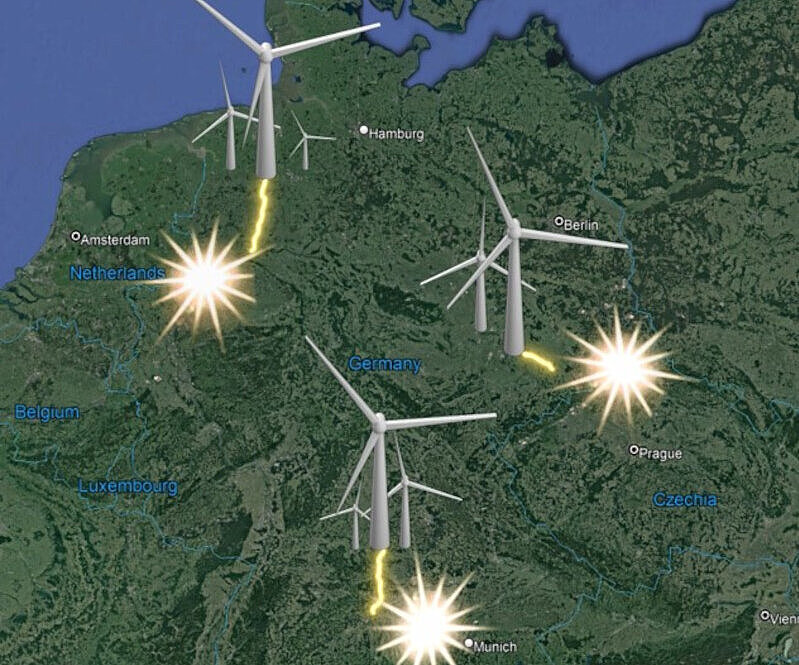A decentralized "Energy Internet Europe„: to complement the European interconnected powerline systems
In Europe, the European interconnected systems between countries already provide physical and digital interfaces that enable European electricity trading and thus optimized overall use of generated electricity for all participating countries.
This Europe-wide, close-meshed electricity network of high-voltage and extra-high-voltage lines is used to distribute electrical energy on a large scale.
By linking various smaller regions, the decentralized "Energy Internet Europe", on the other hand, can stabilize small-scale, volatile electricity production from photovoltaic energy and wind power across national borders, thus minimizing the need to expand storage facilities.
The Energy Bands run along federal highways that do not stop at national borders in Europe but, on the contrary, continue seamlessly on the other side of the border - i.e., they can perfectly perform cross-border volatility balancing of decentralized generation and consumer structures on a smaller scale.








